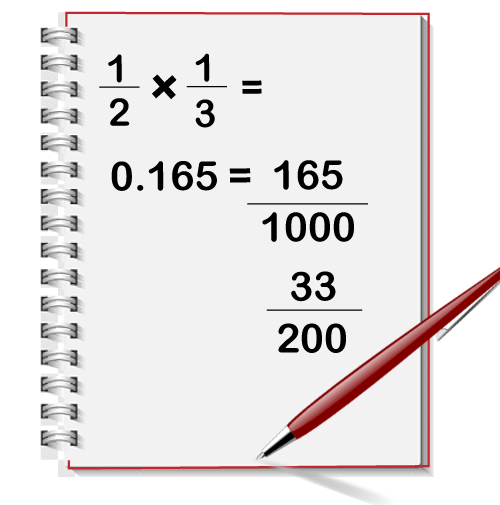How to Multiply Fraction
Fraction refers to a set of numbers written in the form of x/y where x and y are integers and y ≠ 0. ( y is not equal to zero). For example, 1/2, 3/7, 4/3, etc.
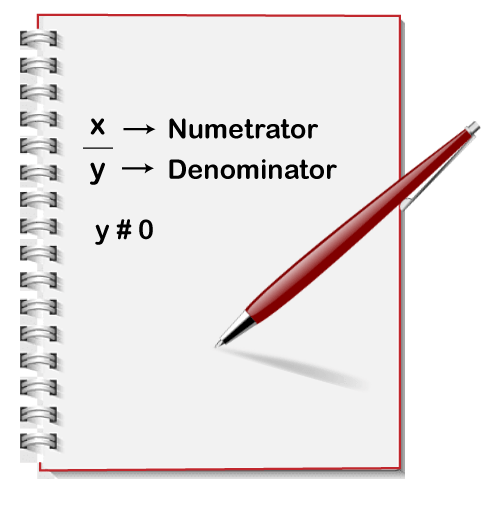
Where,
X = It is an integer called the numerator.
Y = It is an integer called the denominator.
The numerator can be equal to denominator but not higher than the denominator. This type of fraction is known as a proper fraction.
When the numerator is greater than denominator is called an improper fraction.
Multiplying fractions might look a little bit challenging in starting, but once you know how to multiply fractions, you will be able to solve the problem without taking much time. To multiply any fraction, first, you need to turn a mixed number into improper fraction afterward multiply numerators and denominators and solve your fraction to get the final solution. In this tutorial, we will discuss step by step procedure of multiply fraction.
Multiply simple Fraction:
1. Write the question on a piece of paper:
Writing the question on paper will help you learn how to multiply fractions better. If you make a mistake while solving the problem, it will be simpler to go back to your workbook to find the error. As you know, each fraction has a numerator (the number located at the top) and a denominator (the number located at the bottom). You need to separate the numerator from the denominator with a straight line.
Try to keep your fraction in a straight line so that it will easier for you to stay organized and work effectively.
Note:
If you are going to multiply any fraction, simplify your fraction in the simplest form before multiplying them so that you can deal with a smaller number.
2. Multiply the Numerator first:
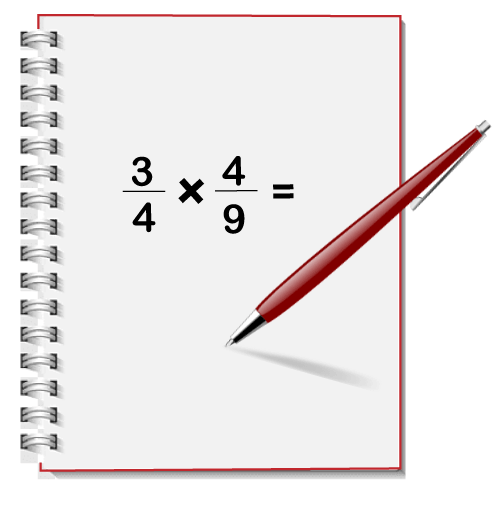
Let us understand this concept with an example. If you are asked to solve for 3/4 * 4/9, the first thing you need to do is multiply 3*4, which is 12. This will be the numerator for your solution.
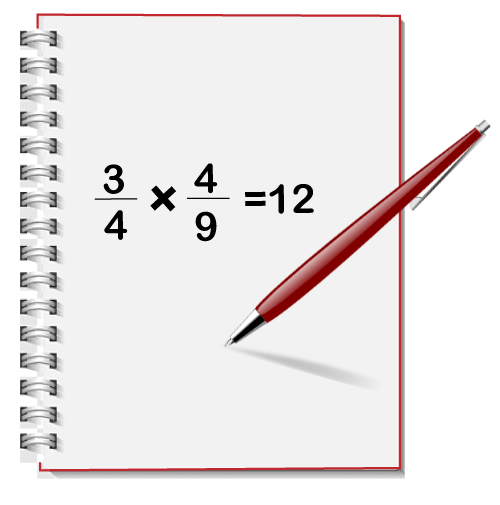
Example: 1
Solve the problem, 4/5 * 7/3. Here, the first thing you need to do is multiply 4*7, which is 28. This will be the numerator for your answer.
Example: 2
2/3 * 3/8
Here, the first thing you need to do is multiply 2*3, which is 6. This will be the numerator for your answer.
3. Multiply the Denominator:
In the given an example 3/4 * 4/9, you need to multiply 4*9 to get 36. This is your denominator for your solution. The answer to this problem is 12/36.

For example 1
The given problem 4/5 * 7/3, you need to do is multiply 5*3, which is 15. This will be the denominator for your answer. The answer to your first example is 28/15.
For example 2
2/3 * 3/8
You need to multiply 3*8, which is 24. This will be the denominator for your solution. The answer to your multiplication problem is 6/24.
Note:
If you are multiplying any fractions, you need always to multiply the fraction across. Multiply the numerator of the first fraction with the numerator of the second fraction, and note down that as the numerator of the solution. Afterward, do the same procedure with the denominator of each fraction.
4. Simplify your new fraction into the lowest form as much as possible:
If the numerator and denominator have common factors (the can be divide equally by the same number), you can simplify your solution. Here, 3/4 * 4/9, the answer for the given problem was 12/36. Both 12 and 36 are divisible by 12 to get your final simplified solution, which is 1/3.
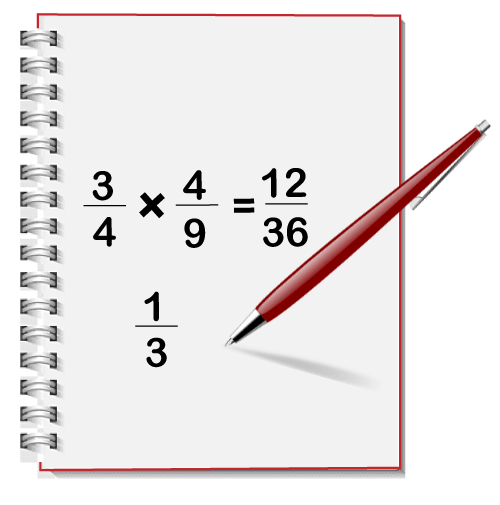
For example 1
2/3 * 3/8, the answer for the given problem was 6/24. 6 goes into both itself and 24 evenly. The simplified solution is 1/4.
Multiply Mix Fraction:
Write the question on Paper:
Writing questions on paper will help you to track your work. You may have the potential to solve your problems in your mind, but when you start, it is a good way to write everything down, step by step. If you make a mistake in your solution, it is convenient for you to go back and find out what happened so you can fix it easily.
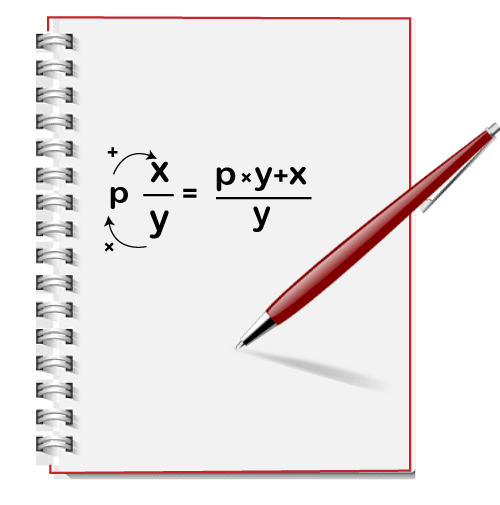
P and x/y = p*y+x/y
Generally, any fraction comprises two parts, the numerator, and the denominator. The numerator is the top number, and the denominator is the bottom number of the faction. A fraction is separated with a horizontal straight line. To write a mixed number, you need to put the whole number on the left-hand side of the fraction.
Change the Mixed number to an Improper Fraction:
If you are going to solve the mixed fraction problem, you need to change the mixed number to an improper fraction. For Example, you asked to solve the problem is 1 and 2/3 * 3 and 2/5. The first thing you need to do is change the mixed fraction into improper fractions; it means the numerator will be greater than the denominator. Here, the solution is given how to solve this:
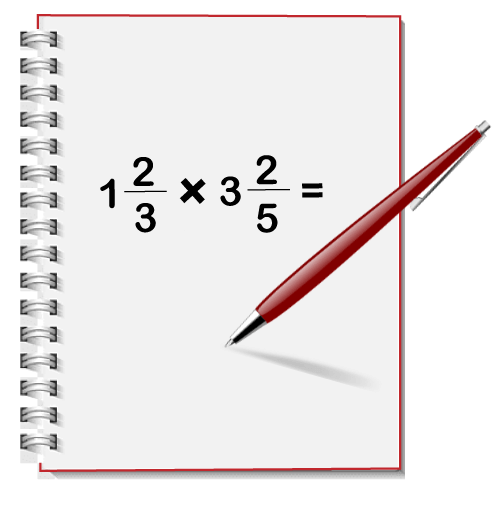
- 1 and 2/3 = 5/3, when made into an improper fraction, the denominator will always be the same. The first thing you need to do is multiply the denominator by the whole number (3*1) and add the answer to the numerator (2). (3*1) +2 = 5.
- For 3 and 2/5, multiply the denominator by the whole number (3*5) and add the given solution to the numerator (2). (3*5) + 2 = 17. Here, you can get the solution for 3, and 2/5 is 17/5.
Simplify your new fraction into the lowest form as much as possible:
In the next step, you need to do is simplify the improper fractions to make the numbers easier to multiply. In the given example, we are left with 5/3 * 17/5. If you can simplify the fraction first, it will be easier for someone to do the solution. When simplifying any fraction, you need to examine the cross numerator, and the denominator can be divided by the same number or not. Here in the given step, 5/3 * 17/5, 3, and 17 cannot be, but 5 and 5 both are equally divisible by itself. To get your simplified solution for your fraction.
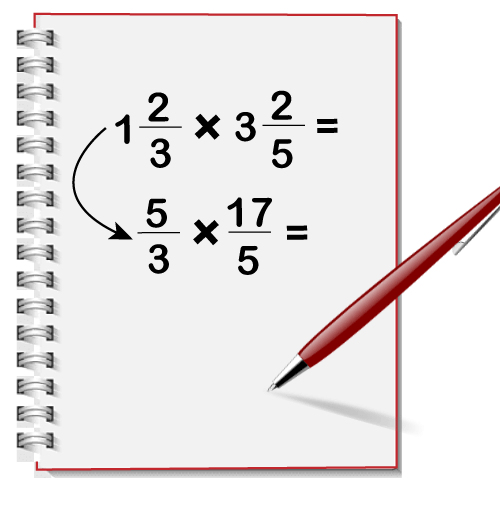
You need to change the first fraction by from 5/3 to 1/3.
You need to divide 5 by 5 to get the result 1, and change the second fraction from 17/5 to 17/1.
You can also simplify individual fractions, only if the numerator and denominator have a common factor. For example, if we consider 5/3 as a 6/3, you could simplify that fraction to 2/1.
Solve for the problem by multiplying the numerators and the denominators:
After now, all you need to do is solve your fraction by multiplying the numerator 1*17 to get 17 for the new numerator and multiply 3*1 to get 3 for the new denominator. So the final improper fraction for the problem is 17/3.
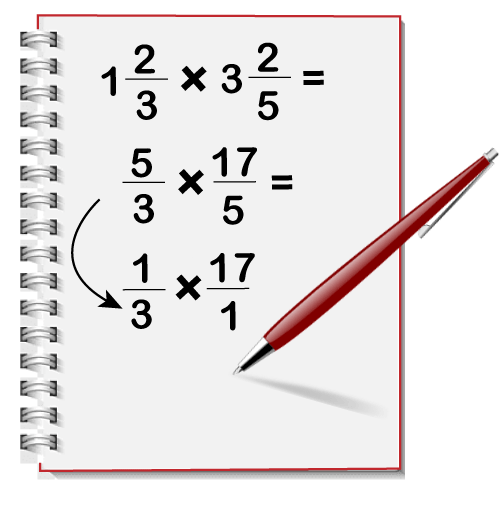
Note: Write down your work step by step so that you don’t forget any step in the process. Improper fractions and mixed numbers can be a little tough, but if you are practicing daily, you will get command over any problem related to multiplication of the problem.
Convert the fraction into a mixed number to get the final solution:
After now retrieve back to a mixed number, you need to do a simple division procedure. Here, you need to divide the numerator by the denominator to get the final solution. For example, 17/3, 3 goes into 17, 5 times, with 2 leftovers. 5 becomes the whole number, and 2 becomes the new numerator for the problem. The denominator 3 will be the same. In the last step, 1 and 2/3 * 3 and 2/5 = 5 and 2/3.
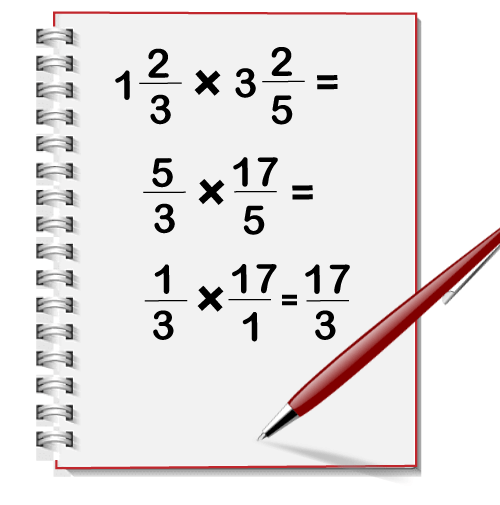
When you are simplifying any fraction in your mind and facing some issues, write it out on paper.
Using a Calculator:
Make a fraction into a decimal form to solve the equations on the calculator:
To solve any problem based on the multiplication of any fractions, you need to enter your fractions individually into the calculator to find their decimal forms. For example, if you are going to solve a problem 1/2*1/3, 1/2 would be entered as 1 divided by 2 you will get the answer of 0.5. Afterward, you need to enter the next fraction in the equation, 1/3, as 1 divided by 3 to get the answer 0.333.
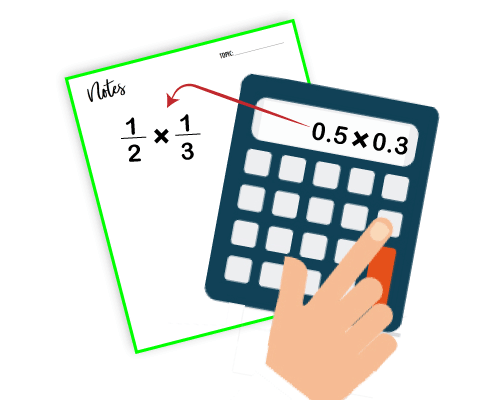
Some calculators have some additional features that enable you to enter the fraction as a fraction so that you don’t have to deal with decimals.
Use mixed numbers by putting the whole number along with the decimal:
It is simple to use mixed numbers in your calculator, even through your calculator doesn’t have a fraction function. Here, you simply need to follow the step to turn the fraction into a decimal form and then place the whole number along with the decimal point to continue with your equation.
For example, to turn the mixed number 1 and 1/ 2 into a decimal form, all you need to do is divide 1/2 on the calculator, you will get 0.5. Then, place the 1 along with the decimal point to get 1.5.
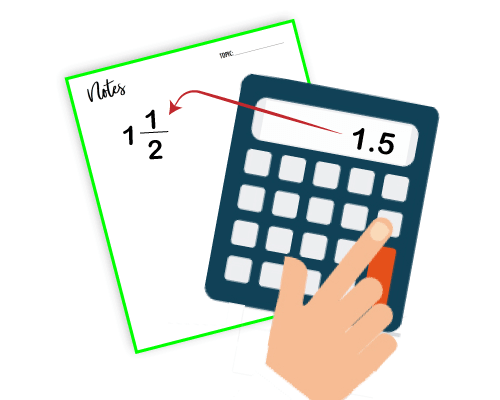
Multiply the Decimal:
Enter the decimal form of the fraction on the calculator. For example, 1/2*1/3 put 0.5 *0.33 into the calculator. You will get the decimal 0.165 as the answer. If you can write it on a piece of paper, it would be beneficial for you.
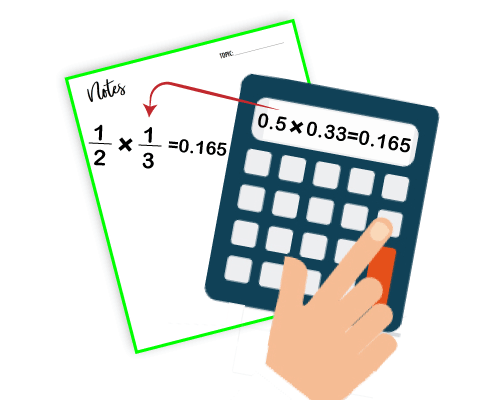
If your calculator has some additional features, you could also put the equation directly into your calculator.
Turn Decimal into Fraction:
Write the decimal form over the denominator of 1 by using a piece of paper. For example, 1/2*1/3, you would write this fraction in the form of 0.165/1 on a piece of paper. Here, you will find many places there are after the decimal point. 0.165 has 3 digits after the decimal point, so you need to multiply the denominator and the numerator by 1000. Your final fractional number would be 165/1000.
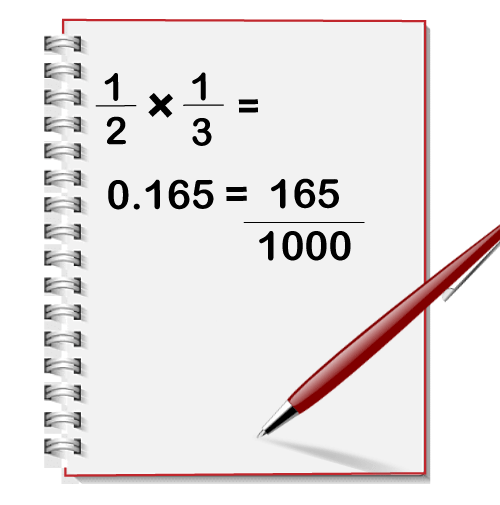
Simplify your Fraction:
Once you turn decimal into a fraction to get the final result, for big numbers, you might have to simplify the given fraction more than once to get the smallest possible fraction. For example, 165/1000, the number 5 goes into both the numerator (165) and denominator (1000), simplifying the fraction to 33/200. It would be the final result.
